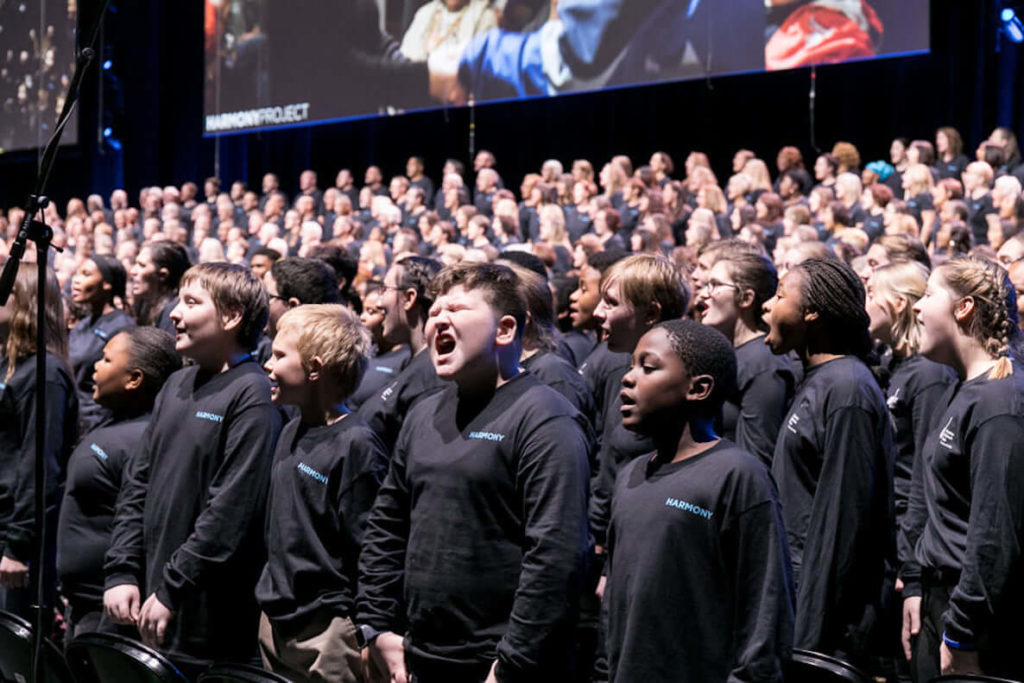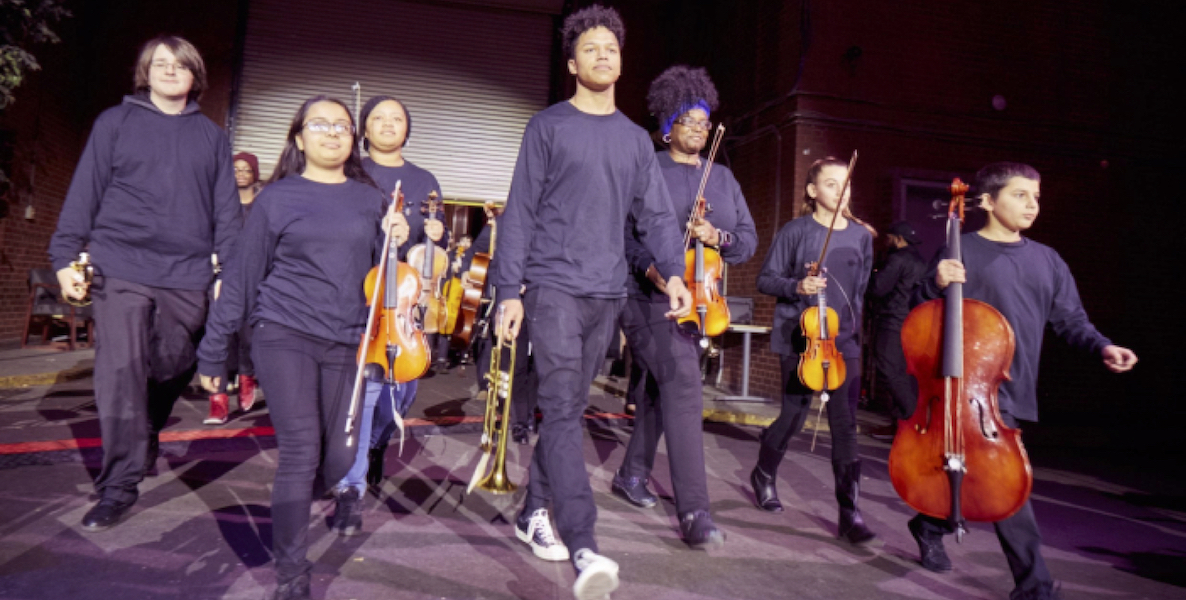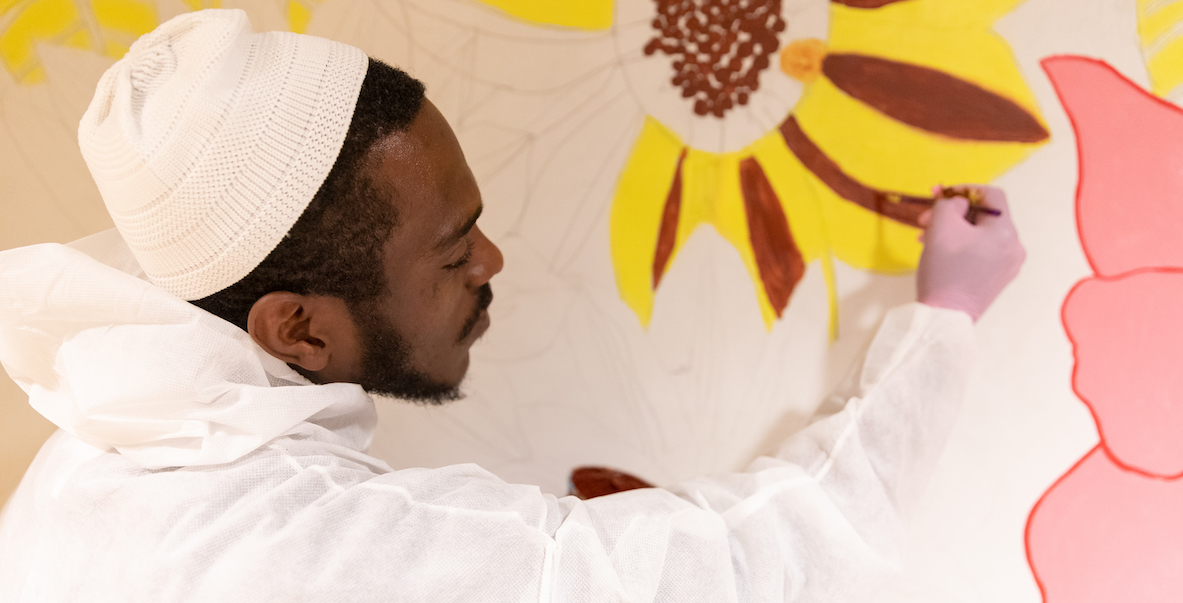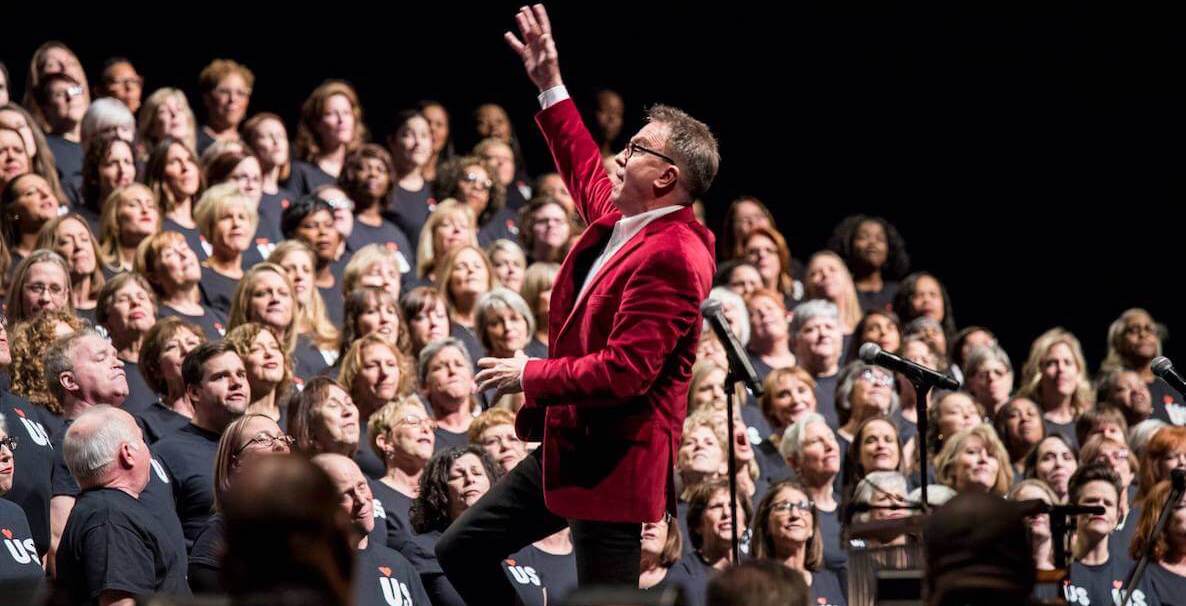David Brown went to college in Columbus, Ohio, and loved the city, but was sure he could never live there again after he graduated and left for New York City in 1990.
“It felt too segregated and too white and too one-way-of-thinking,” he says of Columbus, which a 2015 study found to be the second most economically segregated city in the country.
![]() But 30 years later, he’s now a decade-long resident of Columbus and is dismantling the social divides that created his perception of the city—one that he now admits was somewhat unfair—in an unconventional way: through music.
But 30 years later, he’s now a decade-long resident of Columbus and is dismantling the social divides that created his perception of the city—one that he now admits was somewhat unfair—in an unconventional way: through music.
Harmony Project, which Brown founded in 2009, brings people of varying experience and ability levels—and of a multitude of races, income levels and professional backgrounds—together to sing. But the end goal is more than music-making. “If the harmony ends when the practice ends, what’s the point of the chorus other than providing great musical entertainment?,” he asks. “By getting people to sing together, can we build a more inclusive community past just chorus practice?”
![]() It turns out, the answer is yes.
It turns out, the answer is yes.
What started as an 89-person chorus in 2009 is now made up of 500 singers from 40 of the county’s 64 zip codes, with a wait list of more than 500 more. An additional 500 people participate in Harmony Project’s musical programming for students, incarcerated men and women, veterans, those who are differently abled and those who have overcome homelessness, among others. In total, the organization engages 1,100 people a week.
“We want people who live in gated communities working with people behind bars,” says Brown. “We’ll find something we have in common, either a love of music, a love of singing, or a love of service.”
The projects are coordinated with intention, pulling people out of their comfort zones and matching them with projects that will introduce them to someone or somewhere new.
“We’re intentional about making sure that people who work together live in different zip codes, and intentional about getting people to work in a community that they have never been to that they may have driven through and had a preconceived notion about,” explains Brown. “We want people who live in gated communities working with people behind bars. We’ll find something we have in common, either a love of music, a love of singing, or a love of service.”
Philadelphia, even more so than Columbus, is a city of silos.
A 2015 analysis by FiveThirtyEight identified the City of Brotherly Love as the fourth most racially segregated metropolis out of the 100 most populous cities in the country. And a 2017 report from the Urban Institute found that Philadelphia is the seventh most economically segregated commuting region in the country; Columbus didn’t make the top 10.

We also have our share of arts organizations that count equity, inclusion or service as part of their mission, notes Dan Gasiewski, community arts coordinator for the city’s Office of Arts, Culture and the Creative Economy (OACCE). He mentions two, in particular: The Best Day of My Life So Far is now a decade old and brings volunteers of all ages and across many other lines of difference to form an intergenerational storytelling group in senior centers.
And there’s the band Raíces Boricuas, which with OACCE’s support performed at Kensington Health Sciences Academy in October. Member Aida Cruz said that the performance was particularly exciting because, while the neighborhood is a diverse mix of Korean, Cuban, Dominican, Puerto Rican, and African American, all of its residents rarely have a reason to come together. The performance gave them that.
But there is nothing here with the scale and ambition of Brown’s endeavor. The Harmony Project programming is free for everyone. In return every chorus member performs at least eight hours of community service in each six-month period they spend in the chorus—which Harmony calls seasons—for a total of 8,000 service hours every year.
![]() When you add everyone’s contribution together, including participants in programming and the many people who volunteer with Harmony Project but don’t sing, the organization coordinates 60,000 volunteer hours each year through more than 400 volunteer projects—an estimated $1.5 million investment in the city.
When you add everyone’s contribution together, including participants in programming and the many people who volunteer with Harmony Project but don’t sing, the organization coordinates 60,000 volunteer hours each year through more than 400 volunteer projects—an estimated $1.5 million investment in the city.
The chorus meets weekly for an hour and 15 minutes, for a total of 13 or so rehearsals each season. The season concludes with a concert, in which all members of the chorus perform for the public. Once a year, everyone in both the chorus and the programming get together to perform—including, in some cases, incarcerated men and women who are released for the night for the occasion. In December, nearly 1,000 singers and a 30-piece orchestra performed for an audience of 10,000 in the city’s Nationwide Arena.
Brown—who is originally from rural Louisiana but came to Columbus for college—had a two-decade career in music and youth programming prior to launching Harmony Project, so he knew that in a large enough chorus, not everyone has to have perfect pitch. “I knew that I could take everyday people who weren’t necessarily great singers and turn them into a great chorus. I could get them out of their seats as an observer and onto the stage as a performer,” he says. “In a not so subtle metaphor for the community, the stronger voices lift the weaker.”
Funders for the nonprofit range from individuals to foundations to corporations, with sizable support from the Columbus Foundation and the City of Columbus. Their annual operating budget in 2010 was less than $50,000, and is today around $1.8 million, with about a quarter of that paying the salaries of eight full-time and two part-time staff members as well as the artists and teachers they partner with.
“The idea we’re going for is not musical harmony. The idea we’re going for is social harmony,” Brown says. “We just happen to sing while we work.”
Brown considers the success of the organization the relationships he sees forged across differences, and remembers in particular the day after the 2015 Charleston, North Carolina, shooting in an African Methodist Episcopal Church, when a middle-aged Jewish mom who sang in the chorus detailed her reaction to the incident during rehearsal.
“She said, ‘You know, usually I’d see that and say that’s a sad story. But today, I wept, because I thought, what if that had been Jackie? Or Patsy? Now, I recognize community not as something different than me. I recognize it as my own,’” he says.
Janine Dunmyre first heard about Harmony Project in 2017, and was disappointed to learn that they had a staggering waitlist. That spring though, the organization decided to double the size of the chorus—at the time it was made up of only 250 voices—and Dunmyre was lucky enough to get a spot.
Dunmyre had been musically involved in high school and had played piano for many years but says that “as an adult, I lost touch with my musical abilities other than singing along with the radio.” Harmony Project allowed her to get back in touch with her music, and to bring her daughter—one of her four children—into the fold.
“Unlike me, who is passionate about singing, she was lukewarm about that part,” says Dunmyre. “But after her first major volunteer experience beautifying a neighborhood block and working with members all day, she became very enthusiastic.”
The two also travel weekly with Harmony Project to the Ohio Reformatory for Women, where they sing and chat with the women. According to Dunmyre, the music helps the women—volunteers and prisoners alike—connect to each other. “I notice when we sing together, we highlight our common humanity,” she says. “The lyrics have different meaning to all of our experiences.”
Harmony Project also has an impact beyond the connections: Of the women who participate in programming at the Ohio Reformatory for Women, five percent are re-incarcerated after their release, compared to 17 percent of their peers. The project has a similar success rate at South High School, where only 78 percent of students graduate, compared to 100 percent of the seniors who participate in South High Harmony.
South High Harmony—which is conducted in partnership with City Year Columbus—immerses students in music and service, including an annual service trip. In 2019, students traveled to Philadelphia and walked the Mural Mile, freeing the streets of litter as they went.
![]() And in 2017, South High Harmony brought Brown something unexpected: two sons. A student who attended programming moved in with him in 2015 after he experienced a family crisis—the court granted Brown something called “kinship care,” which is when a relative fosters a child, despite the lack of a blood relationship because of their relationship through the organization— and legally adopted both him and a friend of his in 2017.
And in 2017, South High Harmony brought Brown something unexpected: two sons. A student who attended programming moved in with him in 2015 after he experienced a family crisis—the court granted Brown something called “kinship care,” which is when a relative fosters a child, despite the lack of a blood relationship because of their relationship through the organization— and legally adopted both him and a friend of his in 2017.
In Philly, Gasiewski says there is always room for more ways to bridge the gaps that plague us. “No city could ever have too many arts organizations that use their creativity to connect people and bring them together,” he says. “We’re very open to anybody who wants to create anything like that or any creative endeavor that comes from their own truth and that they want to share with people in the city.”
And in Brown’s eyes, of course, such endeavors benefit everyone—not just the musically inclined. “The idea we’re going for is not musical harmony. The idea we’re going for is social harmony,” he says. “We just happen to sing while we work.”
Want more? Read about these inspiring music programs in Philly:
- REC Philly connects local musicians with the tools they need to succeed
- Opera Philly’s radical programming overhaul seems to be paying off
- Temple program repairs and returns musical instruments to Philly students
- Hill-Freedman World Academy album showcases the power of music to unite






